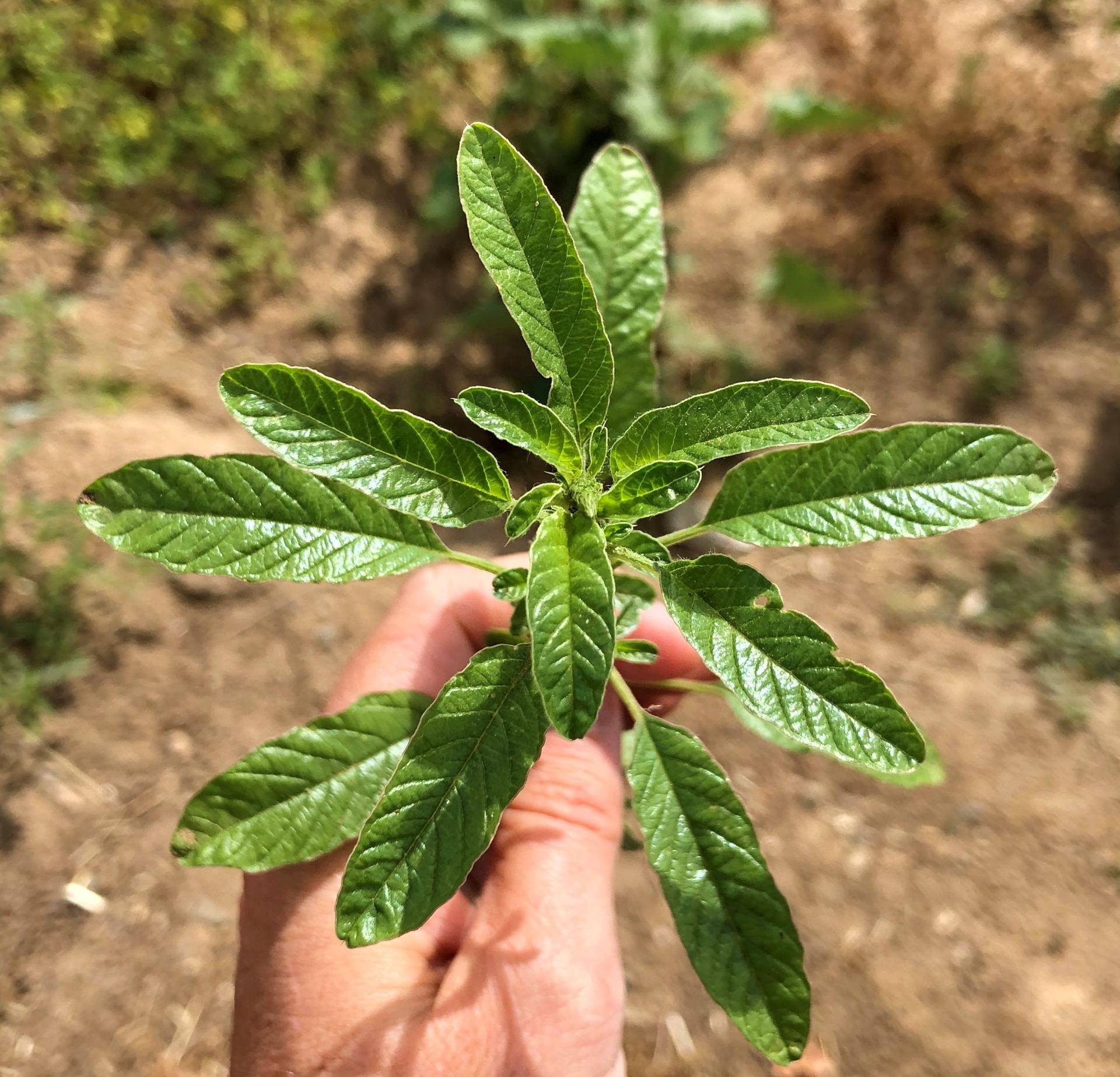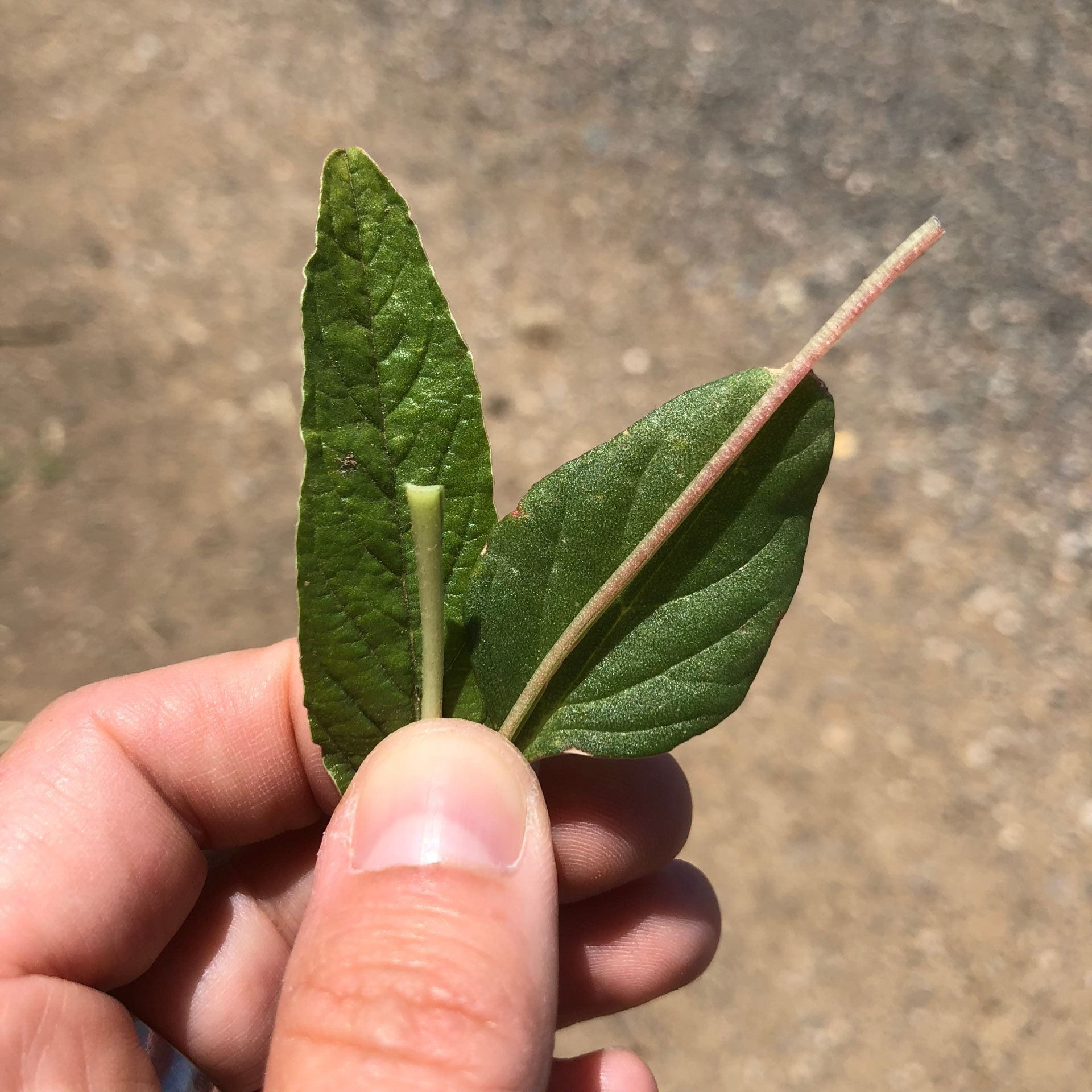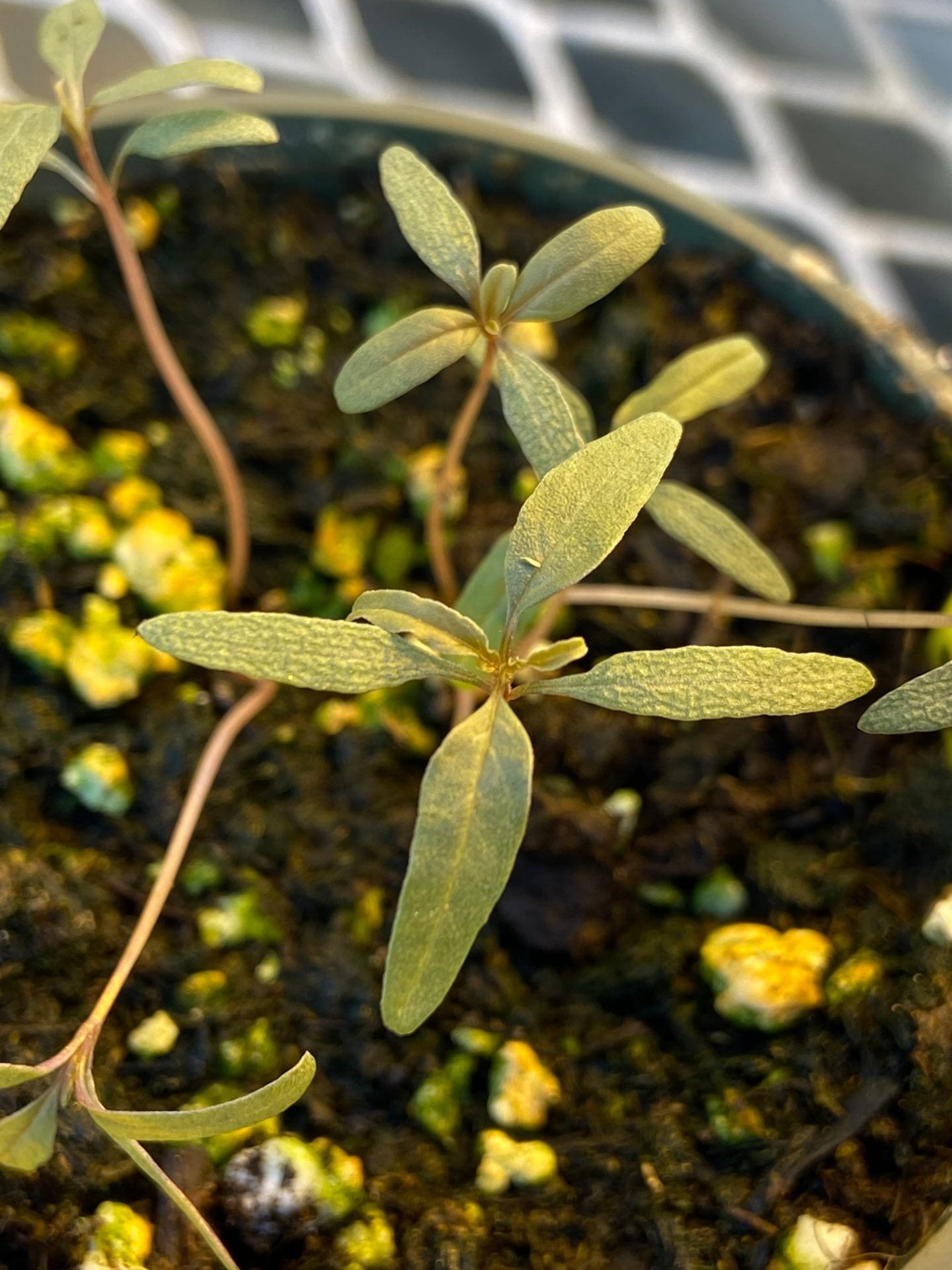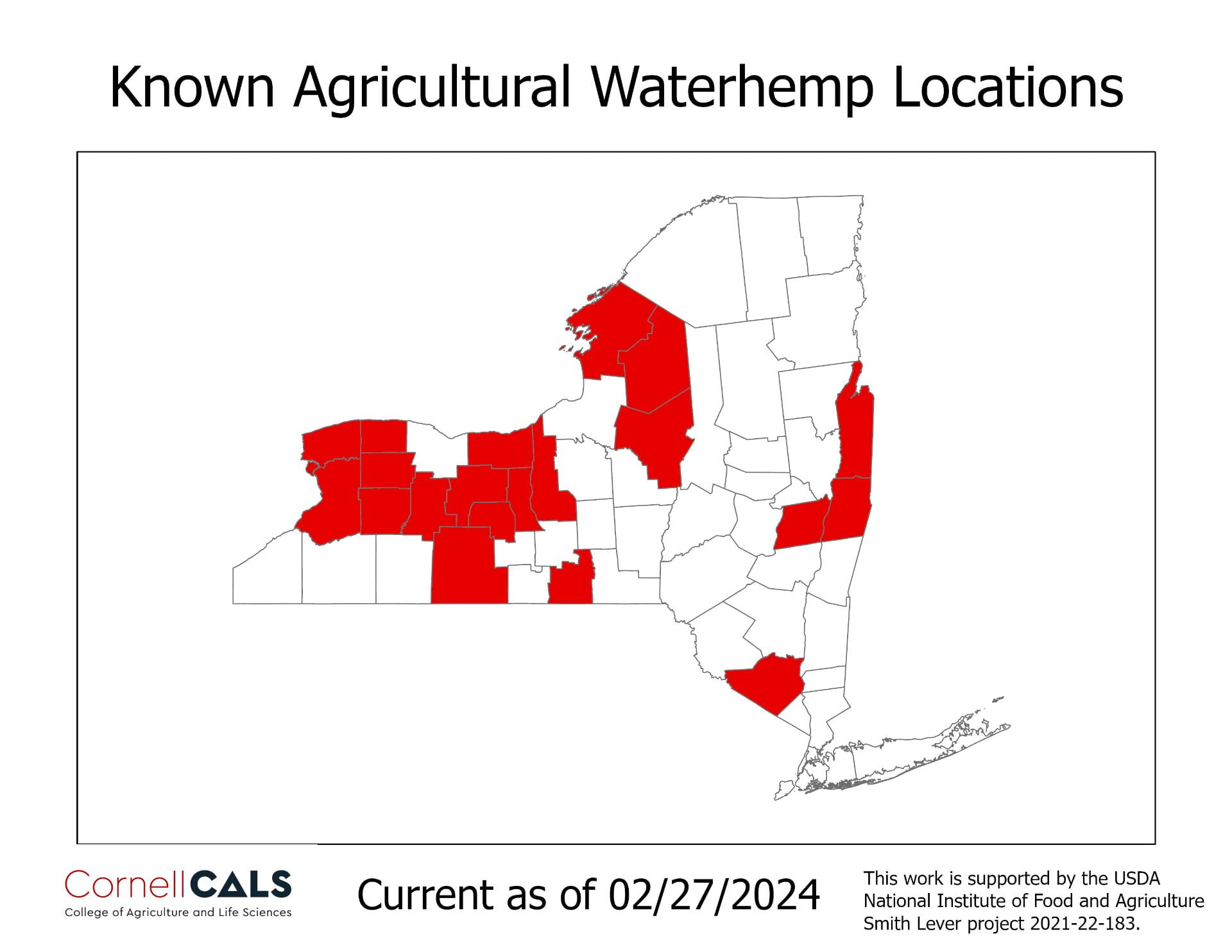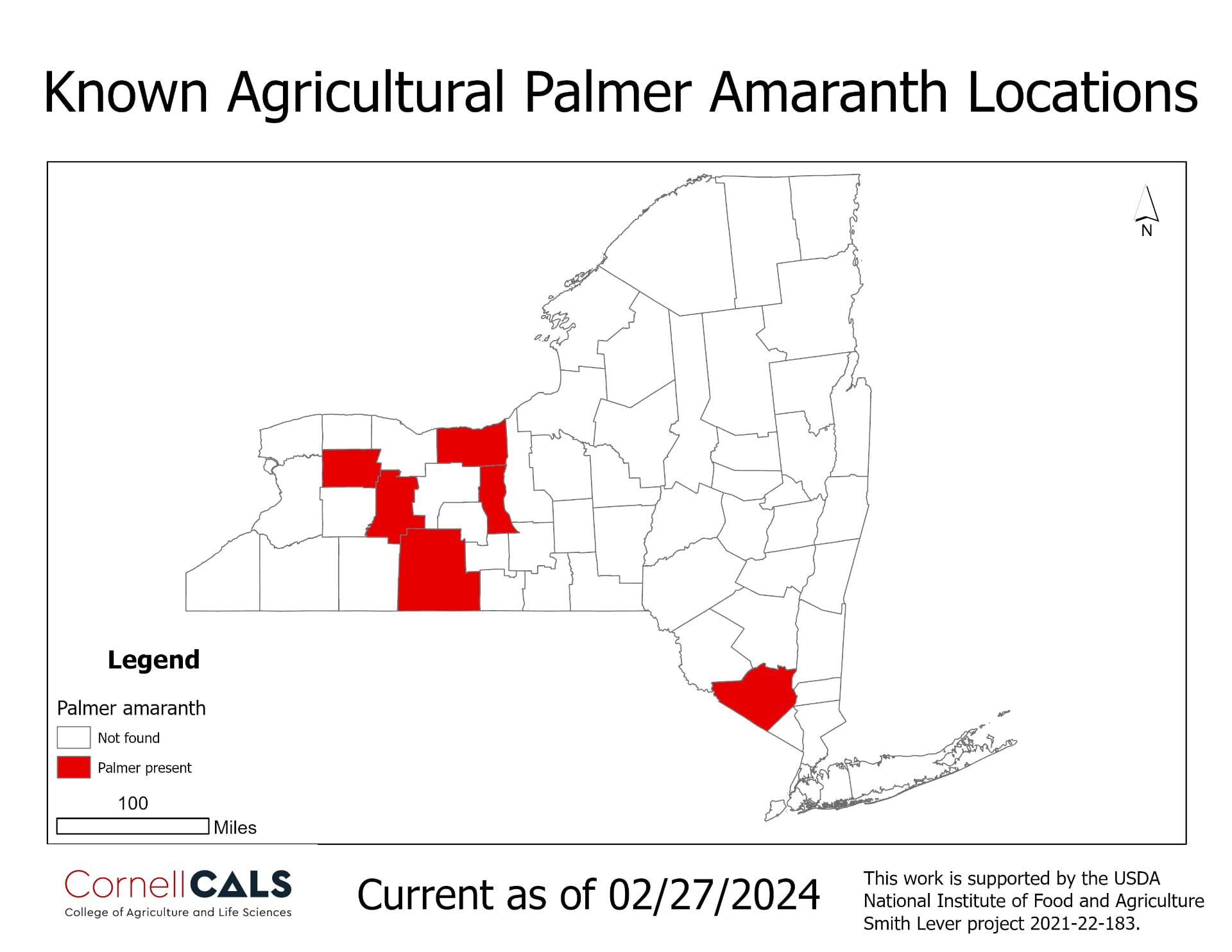Agricultural pigweeds of New York come in two categories: regular pigweeds, which are one of several closely related and largely similar species, and the two herbicide resistant problem pigweeds, waterhemp and Palmer amaranth. Waterhemp (A. tuberculatus) is a growing problem in New York, with two new counties added to the waterhemp map in 2019. Palmer amaranth (A. palmeri) is an even more recent addition to New York farmers’ problems; it has been found in Seneca, Wayne and Steuben counties. In at least two cases, Palmer amaranth arrived on agricultural machinery purchased from the Midwest, and is now found in the first field where that machinery was used. Pigweed seeds are very small, and only very thorough cleaning of equipment used in fields with pigweed seeds present will prevent its spread to new fields.
Toxicity
Amaranthus spp. contains high levels of oxalates and nitrates. Oxalates are absorbed into the gastrointestinal system and bind to calcium in the blood to produce insoluble calcium oxalate that causes kidney tubular nephrosis and eventually, death. If livestock eat large amounts of pigweed, they are likely to be poisoned. Livestock affected by these toxins include pigs, cattle, sheep, goats, and horses. Symptoms indicating poisoning include muscle weakness, abdominal distension (pigs), ataxia, and knuckling at fetlock joints. The high levels of nitrates in Amaranthus spp. can contribute to nitrate toxicity, especially in cattle. Effects of nitrate toxicity on animals include abortions, weakness, accelerated heart rate, rapid breathing, and in severe cases, death. To prevent nitrate poisoning, supplement all cattle with forage that is low in nitrates, especially those that are pregnant.
Waterhemp
Waterhemp is the more common of the two herbicide-resistant, problematic pigweeds in New York, found in twelve counties as of December 2019. In 2020, Dr. Lynn Sosnoskie of Cornell University will be launching herbicide resistance screening for agricultural weeds including waterhemp and Palmer amaranth in 2020; find the details in her What’s Cropping up article from March 2020.
Waterhemp seedlings emerge throughout the summer, making them more difficult to manage with a single management practice. Waterhemp plant stems are not hairy at all, which helps differentiate it from redroot (quite hairy stem) and smooth (lightly hairy stem) pigweeds. The leaves are glossy, longer and narrower than the other pigweeds, and their petioles (the stem attaching the leaf to the main plant stem) are shorter than the leaf. When the plant first emerges, the cotyledons are more egg-shaped than other pigweeds.
Palmer amarnth
Palmer amaranth is a very recent arrival to New York, found in three counties as of January 2020. This herbicide-resistant, problematic pigweed emerges throughout the summer, making treatment difficult and development of herbicide resistance more likely. In 2020, Dr. Lynn Sosnoskie of Cornell University will be launching herbicide resistance screening for agricultural weeds including waterhemp and Palmer amaranth in 2020; find the details in her “What’s Cropping Up” article from March 2020.
Palmer amaranth plant stems are not hairy at all, which helps differentiate it from redroot (quite hairy stem) and smooth (lightly hairy stem) pigweeds. The leaves are more diamond-shaped than other pigweeds, and their petioles (the stem attaching the leaf to the main plant stem) are longer than the leaf; these traits differentiate it from waterhemp. It also often has a single hair in the notched tip of the leaf, and has a geometric, poinsetta-like growth habit. When the plant first emerges, the cotyledons are longer and narrower than those of waterhemp.
Management
Management of herbicide-resistant waterhemp and Palmer amaranth can be difficult in conventional systems, often requiring both pre- and post-emergence herbicide applications. The efficacy of herbicide classes depends on the resistance profile of the weeds in your field.
Waterhemp management
Bryan Brown of NY IPM spoke to the Soybean & Small Grains Congress in winter 2020, and provided specific suggestions for the waterhemp resistance profiles he has seen so far in New York. The herbicide resistance website Take Action has management suggestions for soybean as well: https://cpb-us-w2.wpmucdn.com/u.osu.edu/dist/7/3461/files/2018/12/waterhemp-USB-fact-1zqg7dw.pdf.
For non-conventional farmers, there is information on cover crops for weed management provided by Practical Farmers of Iowa: https://practicalfarmers.org/2019/02/taming-the-waterhemp-beast/ .
Palmer amaranth management
The resistance profile for the Palmer amaranth populations in New York have not been studied; Dr. Sosnoskie plans to conduct that research and is looking for participating farmers.
Take Action again has a solid identification and soybean management page for Palmer as well as waterhemp: http://iwilltakeaction.com/weed/palmer-amaranth.
For non-conventional farmers, there is information on cover crops for weed management provided by Practical Farmers of Iowa: https://practicalfarmers.org/2019/02/taming-the-waterhemp-beast/ .
Common pigweeds
New York’s common “regular” pigweeds are smooth pigweed (Amaranthus hybridus), redroot pigweed (A. retroflexus), tumble pigweed (A. albus), and prostrate pigweed (A. blitoides). Smooth and redroot pigweed have an upright habit like Palmer amaranth and waterhemp, but both have at least slightly hairy stems. Tumble pigweed has a shrubby growth habit, and prostrate pigweed extends its stems parallel to the ground (this is often a sidewalk-crack rather than an agricultural weed). These species have grown in New York for a long time, and have similar emergence timing and management. Water hemp and Palmer amaranth, however, are very different; both are relatively new to New York, emerge all summer long, and have significant herbicide resistance. Many populations of these species across the US are resistant to multiple herbicide modes of action. Learning to differentiate between the “regular” pigweeds, water hemp, and Palmer amaranth is critical for effective weed management.
For more identification and management information, try some of these resources:
- Pennsylvania State university has a good pigweed identification guide here, including management information for agronomic, fruit and vegetable, organic, and animal production growers.
- Kansas State University has another very good identification guide here, that covers all our pigweed species plus a couple more we don’t have in New York; larger versions of the guide photos are in this slideshow.
- University of Minnesota has a good pigweed ID guide here.


